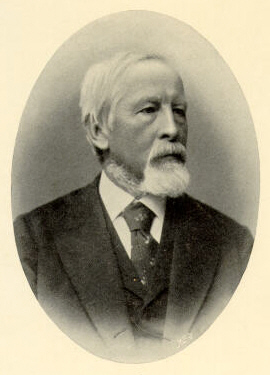Adolf Kussmaul facts for kids
Adolph Kußmaul (born Carl Philipp Adolf Konrad Kußmaul; February 22, 1822 – May 28, 1902) was a very important German doctor. He was known as a leading clinician, meaning he was excellent at treating patients.
Adolph came from a family of doctors. Both his father and grandfather were physicians. He was born in a place called Graben, near Karlsruhe, Germany. He studied medicine at the University of Heidelberg.
After finishing his studies, Adolph first worked as an army surgeon for two years. Then he became a general practitioner, a doctor who treats many different illnesses. Later, he went to Würzburg to get his advanced medical degree. There, he studied with another famous doctor, Rudolf Virchow.
Adolph Kußmaul became a professor of medicine at several universities. He taught at Heidelberg starting in 1857. He also taught at Erlangen in 1859, Freiburg in 1859, and Straßburg in 1876.
Besides his medical work, Adolph Kußmaul was also interested in literature. He helped create the term Biedermeier, which describes a style of art and life from the 1800s. He passed away in Heidelberg.
What Did He Discover?
Adolph Kußmaul's name is still used today for several medical terms. These are called eponyms, which means they are named after a person. He described important medical signs and a disease that still carry his name.
Important Medical Signs and Diseases
- Kussmaul breathing: This is a type of very deep and heavy breathing. It can be fast or slow. Doctors see this breathing pattern in people with severe Diabetic ketoacidosis (DKA). DKA is a serious problem that can happen to people with diabetes.
- Kussmaul's sign: This is a special sign doctors look for. It happens when the veins in a person's neck swell up more when they breathe in. This can be a sign of certain heart problems, like Constrictive pericarditis, or lung problems, like Chronic obstructive pulmonary disease (COPD).
- Kussmaul disease (also called Kussmaul-Maier disease): This is a rare disease called Polyarteritis nodosa. It causes inflammation in the blood vessels. Adolph Kußmaul described this disease with another doctor, Rudolf Robert Maier.
Some other terms named after him are not used much anymore:
- Kussmaul's coma: This used to describe a diabetic coma caused by ketoacidosis.
- Kussmaul's aphasia: This was a term for selective mutism, where a person can speak but chooses not to in certain situations.
His Medical "Firsts"
Adolph Kußmaul was the first to describe or perform many important things in medicine:
- He was the first to describe dyslexia in 1877. He called it 'word blindness' because people had trouble reading words.
- He was the first to describe polyarteritis nodosa, the blood vessel disease.
- He was the first to describe progressive bulbar paralysis, a nerve disease that affects speaking and swallowing.
- He was the first to describe selective mutism, where someone doesn't speak in certain social situations.
- He was the first to diagnose a mesenteric embolism, which is a blockage in the blood vessels of the intestines.
- He was the first to perform a pleural tap (removing fluid from around the lungs) and gastric lavage (washing out the stomach).
- He was the first to try using a scope to look inside the esophagus and stomach. This is now called oesophagoscopy and gastroscopy.
- He was the first to describe the emotional problems that can happen before physical effects in people exposed to mercury.
See also
 In Spanish: Adolf Kussmaul para niños
In Spanish: Adolf Kussmaul para niños



